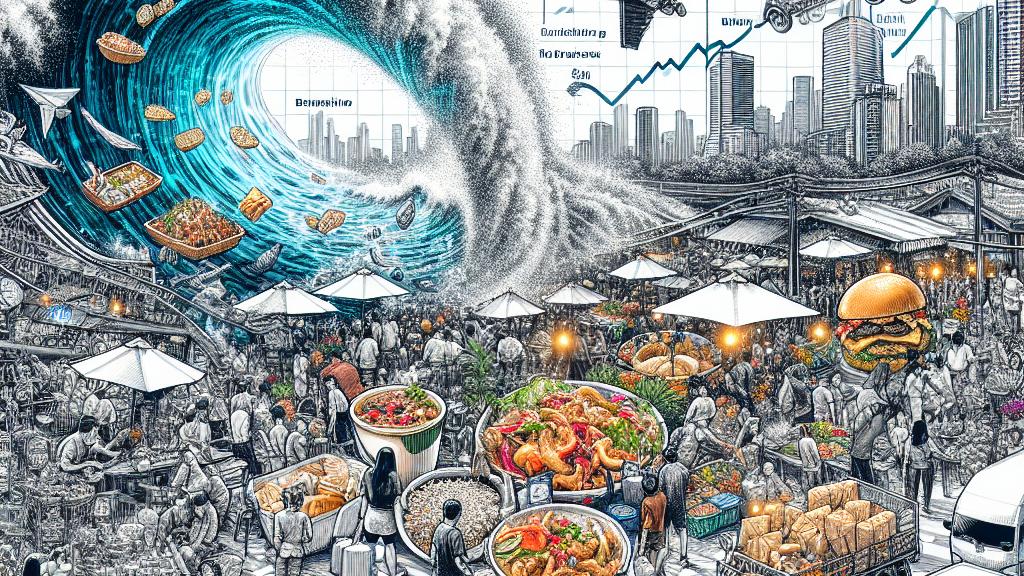Riding the Wave: Thailand's $5 Billion Food Delivery and Ride-Hailing Boom!
Overview
- Thailand's food delivery and ride-hailing market exploded to an impressive $5 billion in the first half of 2024, reflecting a surge in consumer demand.
- Line Man and Grab lead the charge in food delivery, while Grab continues to dominate the ride-hailing sector.
- The market is projected to grow exponentially, reaching $7.1 billion by 2028, as convenience becomes the cornerstone of consumer choices.

Astounding Market Surge
In the bustling landscape of Thailand, the food delivery and ride-hailing services have experienced a remarkable transformation, achieving an eye-popping $5 billion in gross merchandise value (GMV) in a mere six months of 2024. This meteoric rise illustrates not just a trend, but a seismic shift in consumer behavior where convenience reigns supreme. As people navigate the fast-paced, urban lifestyle, the reliance on quick meal deliveries and readily available transport options has surged like a tidal wave. Projections indicate that the market could swell to $7.1 billion by 2028, underpinned by rising demands for healthy meal options, an ever-increasing number of delivery requests, and the embrace of digital platforms.
A Thrilling Competitive Battlefield
Within this vibrant ecosystem, the competition is nothing short of thrilling—a high-stakes race among giants. Line Man proudly holds a sizable 44% market share, closely followed by Grab with 40%. This neck-and-neck battle evokes images of two athletes sprinting toward the finish line, while ShopeeFood emerges as a strong contender with a respectable 10% share. As these services jockey for position, they are not simply fighting for market share; they are competing to win the hearts and minds of a tech-savvy population that craves efficiency and style. Grab's influence extends into the ride-hailing arena, where it remains an indomitable force amid an evolving landscape. With the potential emergence of a duopoly, we watch as each contender enhances their offerings, ultimately striving to provide the best possible experience to consumers.
Navigating Challenges and Seizing Opportunities
As we gaze into the future, the prospects for the food delivery and ride-hailing sectors appear bright yet fraught with challenges. Currently valued at $600 million, the GMV for ride-hailing is anticipated to skyrocket to $1 billion by 2028. This impressive growth is fueled by an upturn in tourism and an increased fleet of accessible vehicles. However, there lies a crucial hurdle: maintaining a sufficient driver supply to meet the burgeoning consumer demand, a dilemma echoed in other markets such as India. The race to adapt is not merely about keeping pace; it demands innovative strategies and creative solutions that respond to consumers' evolving appetites. Ultimately, it is this dynamic interplay of challenge and opportunity that ensures a thrilling future, where both food delivery and ride-hailing services continue to redefine convenience in Thailand.

Loading...